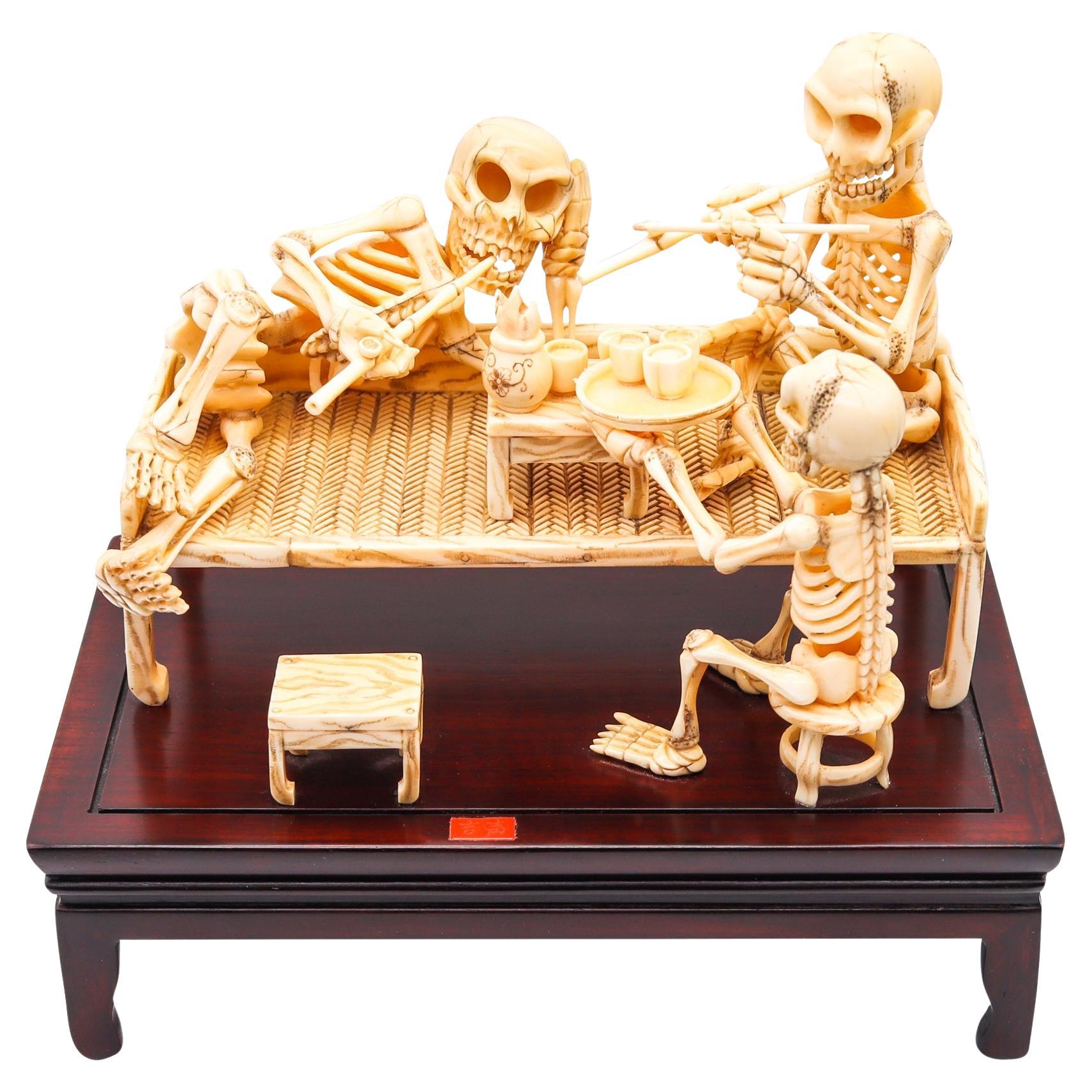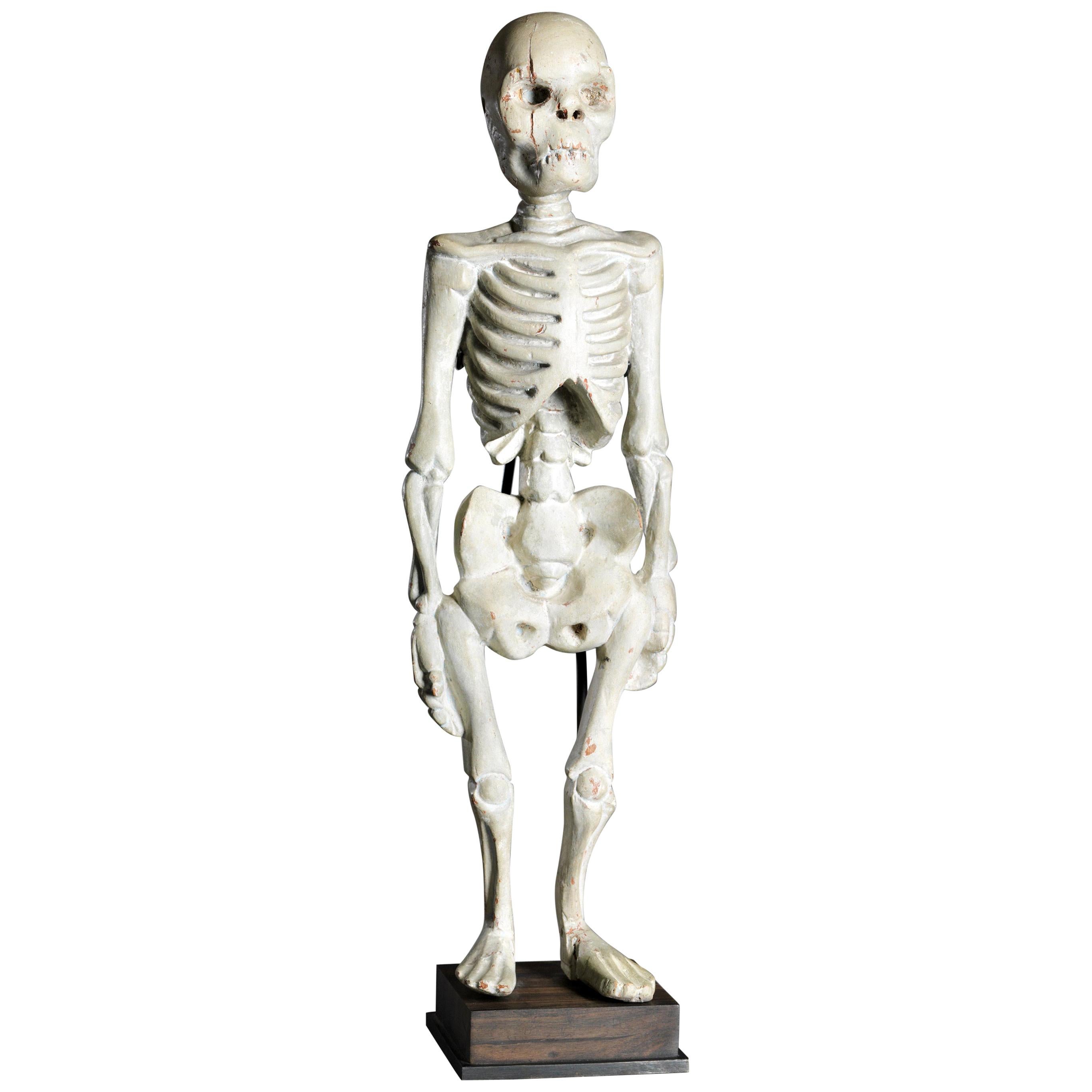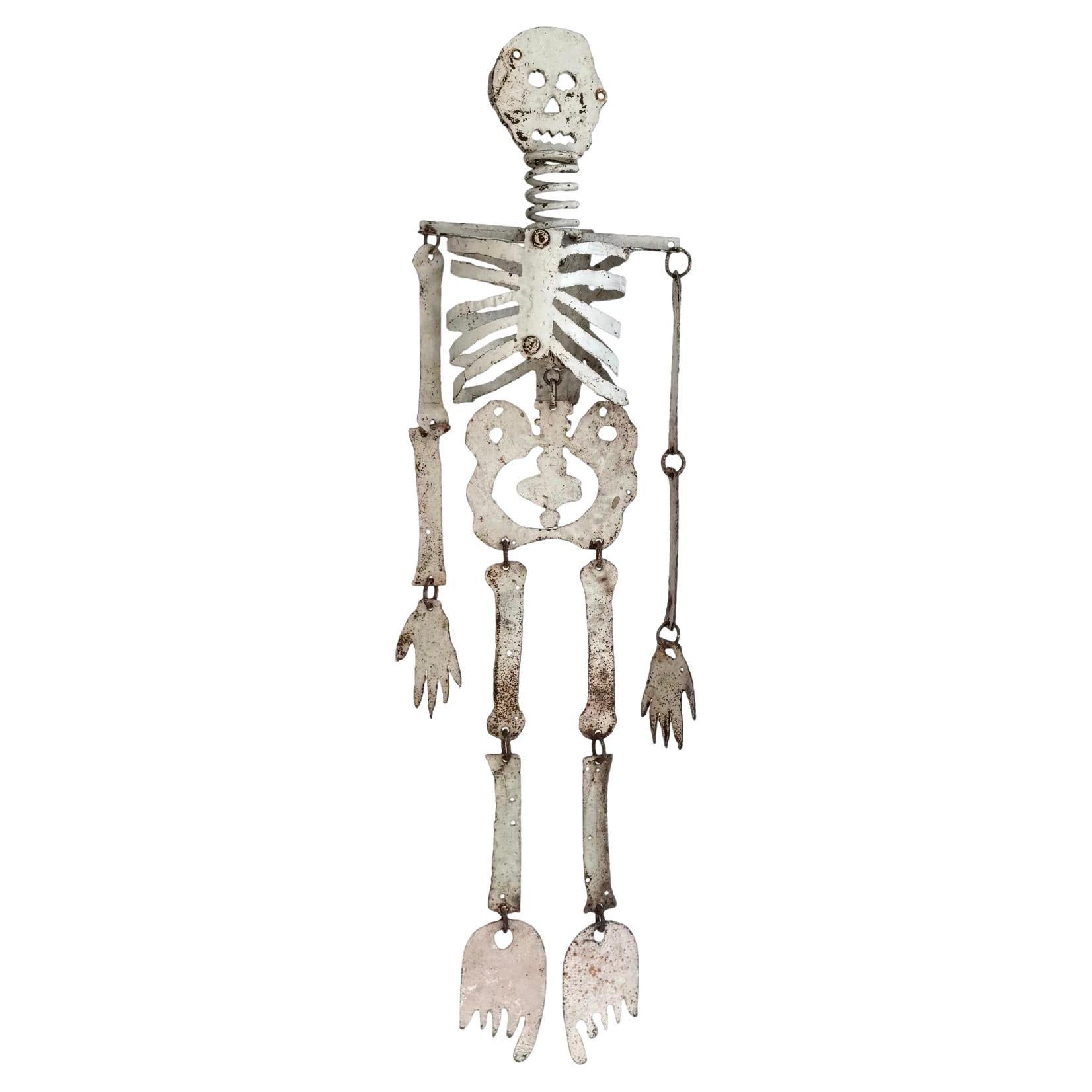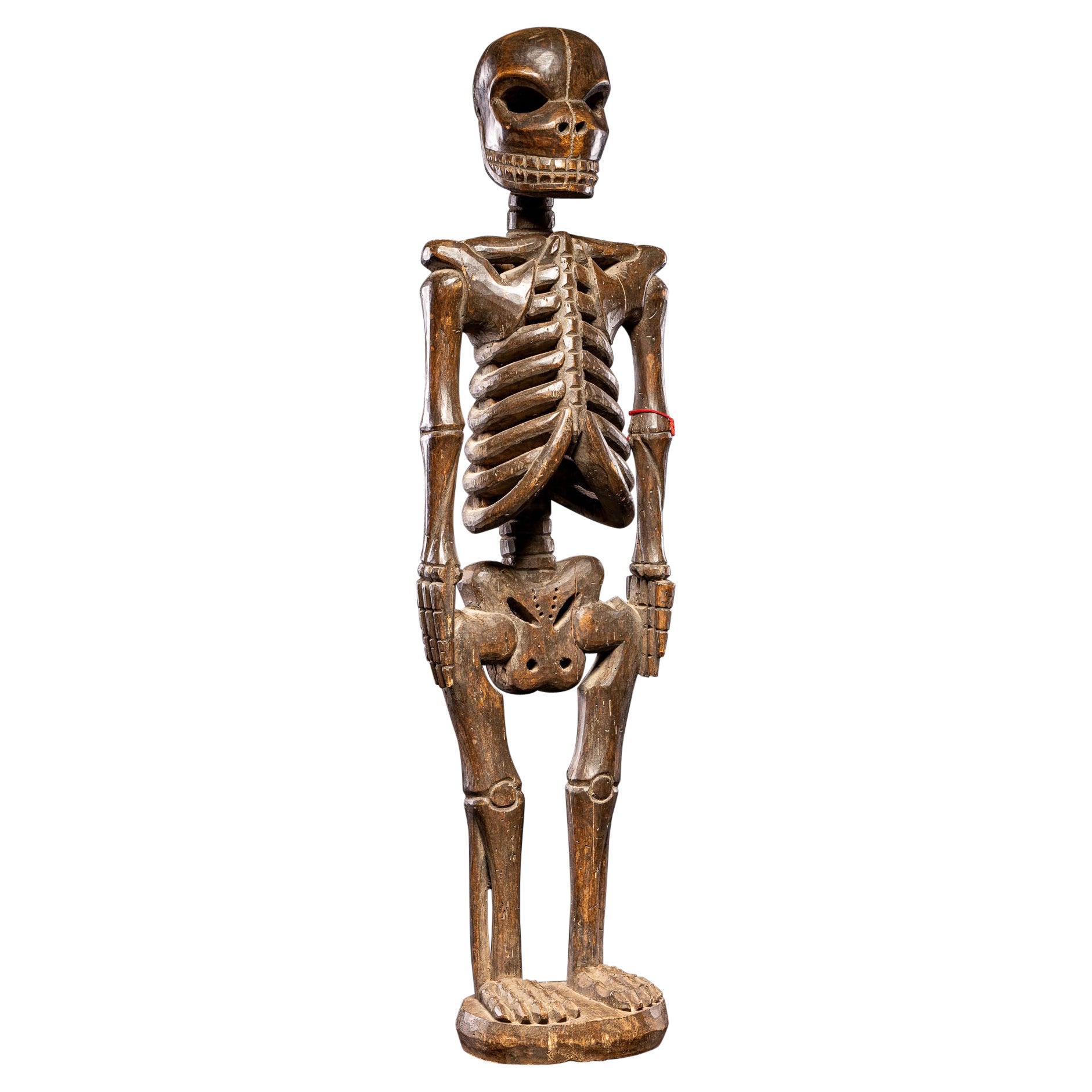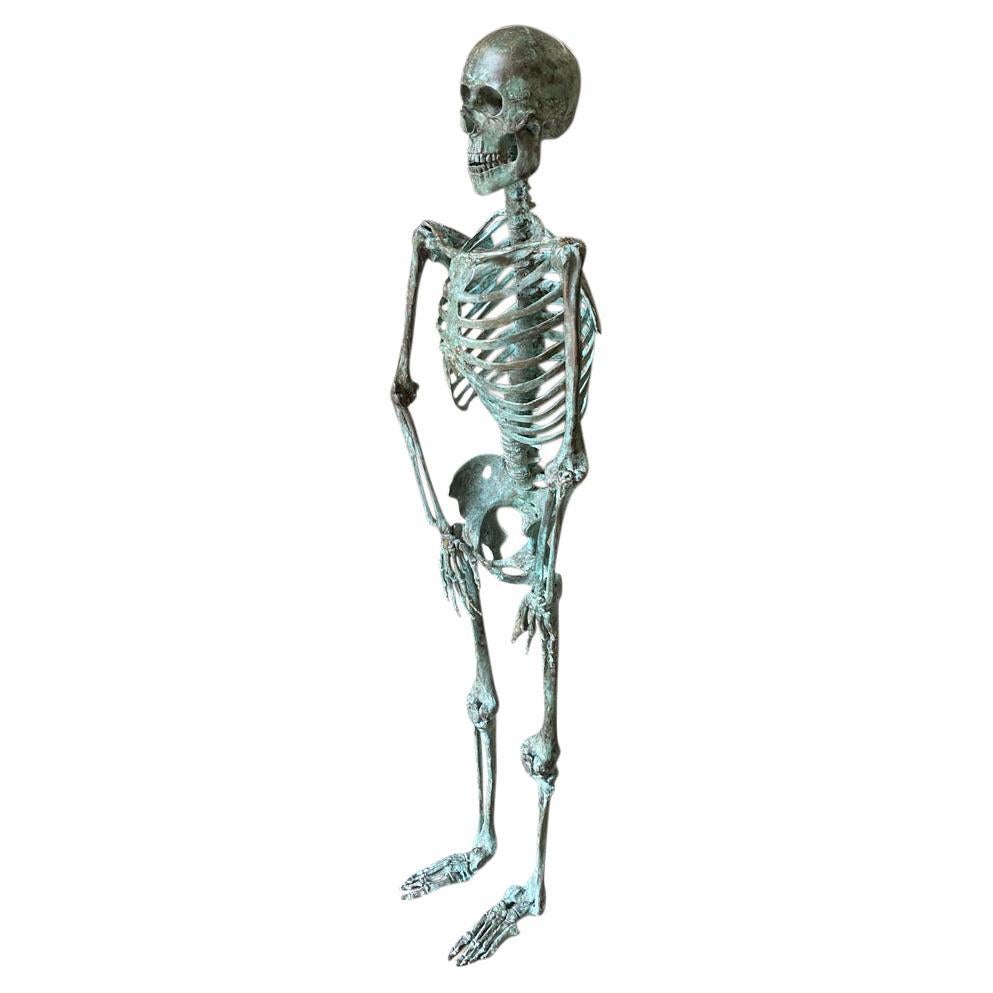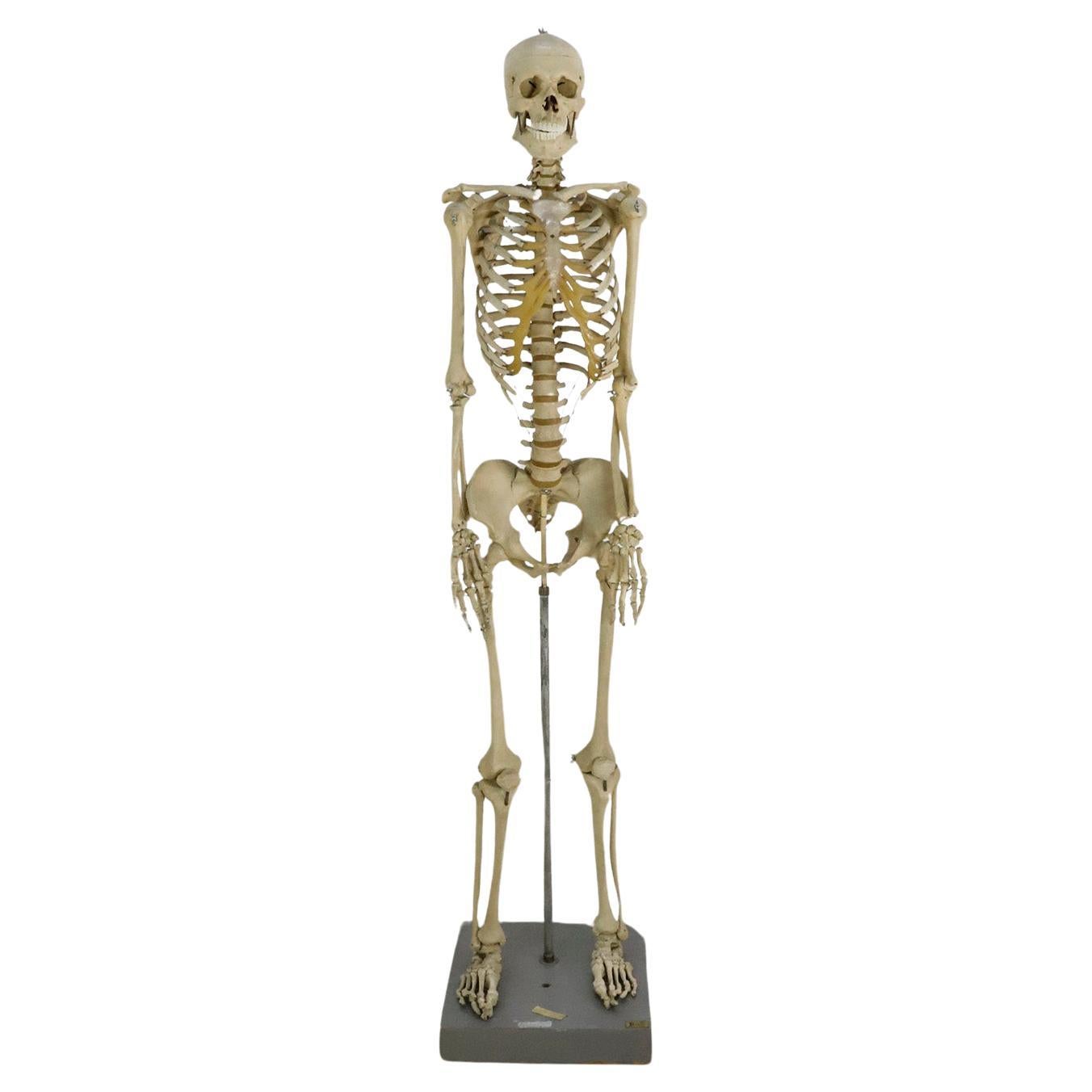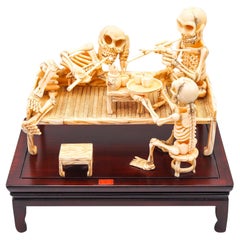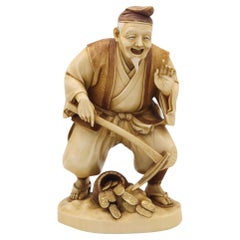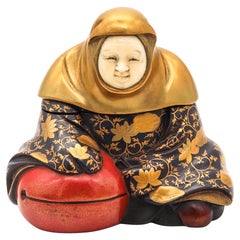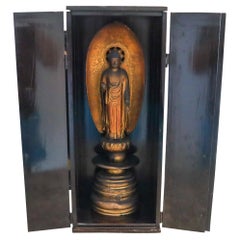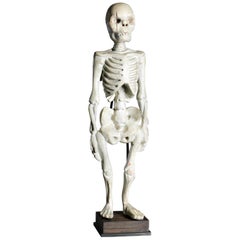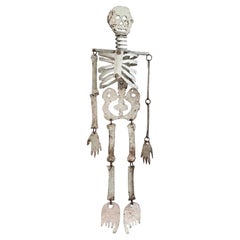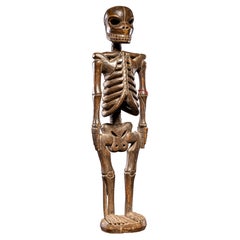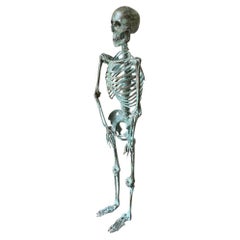Objekte ähnlich wie Japanische Okimono-Skulptur aus der Meiji-Periode 1890 mit einer Gruppe von Skeletten, die spielen
Möchten Sie mehr Bilder oder Videos?
Zusätzliche Bilder oder Videos von dem*der Anbieter*in anfordern
1 von 12
Japanische Okimono-Skulptur aus der Meiji-Periode 1890 mit einer Gruppe von Skeletten, die spielen
12.252,38 €
17.503,40 €30 % Rabatt
Angaben zum Objekt
Ein signierter Okimono aus der japanischen Meiji-Zeit (1868-1912).
Sehr seltene, ungewöhnliche und große skulpturale Montage eines dysplaying Stück okimono. Entstanden in Japan während der kaiserlichen Meiji-Zeit (1868-1912). Dieses außergewöhnliche Okimono-Stück wurde sorgfältig in Holz geschnitzt und zeigt eine Gruppe von vier kompliziert und realistisch dargestellten männlichen Skelettfiguren (Gaikotsu), die in verschiedenen Positionen stehen.
Ein Skelett ist zusammengekauert und spielt mit Mäusen im Boden. Der zweite sitzt auf dem Rücken des anderen und raucht friedlich Opium. Die beiden anderen stehen vollständig in Interaktionsposition. Die gesamte Komposition ist frei auf dem Holzsockel arrangiert, einschließlich eines geflochtenen Korbes, offenbar mit Lebensmitteln und vier verspielten Mäusen.
Zusätzlich gibt es fünf Mäuse in verschiedenen Positionen, die frei herumspielen und deren Augen mit geschnitztem schwarzem Ebenholz akzentuiert sind.
Die Komposition steht auf einem vierbeinigen, frei geformten, geschnitzten Holzpodest mit einer eingelegten roten Plakette, auf der die Signatur des Künstlers eingraviert ist. Die Detailgenauigkeit und die Qualität der Schnitzereien sind wirklich außergewöhnlich.
Hat die genauen Abmessungen von 216,15 mm x 139,7 mm x 359,41 mm (8,51 x 5,5 x 14,15 Zoll).
Nach einer umfangreichen Sammlung von Daten, Vergleichen und Referenzen zu diesem Werk konnten wir nur drei Okimono-Skulpturen dieser Art mit ähnlichen Themen und der gleichen Qualität finden.
Hinweis: Eine ähnliche Schnitzerei von vier Skeletten, die ein animiertes Dominospiel spielen, signiert Shutaro in einer eingelegten rechteckigen roten Plakette, wurde in London von Christie's South Kensington am 14. Oktober 2014 verkauft, Lot 120 Sale 5546.
Hinweis: Eine ähnliche Schnitzerei mit vier Skeletten in einer ansonsten typisch viktorianischen Szene mit einem Fotografen und drei Dargestellten, die in einer eingelegten rechteckigen roten Plakette mit Shutaro signiert sind, wurde am 7. November 2018 in Edinburgh bei Lyon & Turnbull verkauft.
Hinweis: Eine ähnliche Schnitzerei mit fünf sitzenden Skeletten, die Karten spielen und trinken, wurde am 26. September 2018 in London von John Nicholson Fine Art verkauft.
Meiji-Periode
Die Meiji-Ära war die erste Hälfte des japanischen Kaiserreichs, in der sich das japanische Volk von einer isolierten Feudalgesellschaft, die von der Kolonisierung durch westliche Mächte bedroht war, zum neuen Paradigma eines modernen, industrialisierten Nationalstaats und einer aufstrebenden Großmacht entwickelte, die von westlichen wissenschaftlichen, technologischen, philosophischen, politischen, rechtlichen und ästhetischen Ideen beeinflusst war. Die umfassende Übernahme radikal anderer Ideen hatte tief greifende Veränderungen in Japan zur Folge, die sich auf die soziale Struktur, die Innenpolitik, die Wirtschaft, das Militär und die Außenbeziehungen auswirkten. Dieser Zeitraum entsprach der Regierungszeit von Kaiser Meiji. Ihr ging die Keiō-Ära voraus, und auf sie folgte die Taishō-Ära mit der Thronbesteigung von Kaiser Taishō.
Okimono
Dies ist ein japanischer Begriff für ein Ornament, ein Kunstobjekt oder ein dekoratives Objekt, das normalerweise in einem tokonoma oder butsudan "buddhistischen Altar" ausgestellt wird. Es handelt sich um ein Ornament oder eine Figur, die insbesondere in einem Gästezimmer aufgestellt wird. Ein Okimono ist eine kleine japanische Schnitzerei, ähnlich wie ein Netsuke, aber größer als dieses. Im Gegensatz zu den Netsuke, die einem bestimmten Zweck dienten, ist das Okimono ausschließlich dekorativ und wurde im Tokonoma ausgestellt. Während der Meiji-Zeit wurden viele Okimonos für den Export in den Westen hergestellt.
Gaikotsu, was so viel wie Skelett bedeutet, taucht häufig in alten japanischen Mythen und Youkai-Zeichnungen auf. Skelette mit nur menschlichen Knochen werden "sharekoube" genannt. Einige andere berühmte Youkai, die auf Skeletten basieren, sind Gasha Dokuro, Honeonna und Kyoukotsu.
Wichtiger Hinweis: Was antikes Schildpatt oder Elfenbein betrifft, so sind wir große Befürworter des Schutzes gefährdeter Arten in unserer modernen Welt. Wir kaufen oder verkaufen nie etwas, das 100 Jahre oder älter ist, und wir jagen nicht, weil wir wissen, dass diese Maßnahmen auch die Tiere in freier Wildbahn schützen. Wir erkennen auch die große Kulturgeschichte an, die wir mit der Pflege und Ehrfurcht vor diesen antiken Gegenständen bewahren, und stimmen mit den Zitaten überein, dass Objekte, die älter als 100 Jahre sind, nichts mit dem Artenschwund in unserer heutigen Welt zu tun haben.
Zustand: Der Gesamtzustand dieses Stücks ist außergewöhnlich, ohne fehlende oder gebrochene Teile, nicht einmal eine Restaurierung zeigen. Dieses Stück wurde sorgfältig geprüft, um den Zustand und die Echtheit zu garantieren.
INVENTURREFERAT: D012625EM/.6714
- Maße:Höhe: 13,97 cm (5,5 in)Breite: 21,62 cm (8,51 in)Tiefe: 35,95 cm (14,15 in)
- Stil:Meiji-Periode (Aus dem Zeitalter)
- Materialien und Methoden:
- Herkunftsort:
- Zeitalter:
- Herstellungsjahr:1890
- Zustand:Abnutzung dem Alter und der Nutzung entsprechend. Der Gesamtzustand dieses Stücks ist außergewöhnlich, ohne fehlende oder gebrochene Teile, nicht einmal eine Restaurierung zeigen. Dieses Stück wurde sorgfältig geprüft, um den Zustand und die Echtheit zu garantieren.
- Anbieterstandort:Miami, FL
- Referenznummer:Anbieter*in: D012625EM/.67141stDibs: LU8303243370312
Anbieterinformationen
5,0
Gold-Anbieter*in
Premium-Anbieter*innen mit einer Bewertung über 4,3 und 24 Stunden Reaktionszeit
1stDibs-Anbieter*in seit 2023
218 Verkäufe auf 1stDibs
Typische Antwortzeit: 3 Stunde
- VersandAngebot wird abgerufen …Versand von: Miami, FL
- Rückgabebedingungen
Einige Inhalte dieser Seite wurden automatisch übersetzt. Daher kann 1stDibs nicht die Richtigkeit der Übersetzungen garantieren. Englisch ist die Standardsprache dieser Website.
Authentizitätsgarantie
Im unwahrscheinlichen Fall eines Problems mit der Echtheit eines Objekts kontaktieren Sie uns bitte innerhalb von 1 Jahr für eine volle Rückerstattung. DetailsGeld-Zurück-Garantie
Wenn Ihr Objekt nicht der Beschreibung entspricht, beim Transport beschädigt wurde oder nicht ankommt, kontaktieren Sie uns bitte innerhalb von 7 Tagen für eine vollständige Rückerstattung. DetailsStornierung innerhalb von 24 Stunden
Sie können Ihren Kauf jederzeit innerhalb von 24 Stunden stornieren, ohne jegliche Gründe dafür angeben zu müssen.Geprüfte Anbieter*innen
Unsere Anbieter*innen unterliegen strengen Dienstleistungs- und Qualitätsstandards, wodurch wir die Seriosität unserer Angebote gewährleisten können.Preisgarantie
Wenn Sie feststellen, dass ein*e Anbieter*in dasselbe Objekt anderswo zu einem niedrigeren Preis anbietet, werden wir den Preis entsprechend anpassen.Zuverlässige weltweite Lieferung
Unsere erstklassigen Versandunternehmen bieten spezielle Versandoptionen weltweit, einschließlich individueller Lieferung.Mehr von diesem*dieser Anbieter*in
Alle anzeigenJapanische Okimono-Skulptur einer Gruppe von Skeletten aus der Meiji-Periode 1890, Rauchen
Skulpturaler signierter Okimono aus der japanischen Meiji-Zeit (1868-1912).
Sehr seltene, ungewöhnliche und große skulpturale Montage eines dysplaying Stück okimono. Entstanden in J...
Kategorie
Antik, 1890er, Japanisch, Meiji-Periode, Skulpturen und Schnitzereien
Materialien
Holz, Lack
12.252 € Angebotspreis
30 % Rabatt
JAPAN 1890 Meiji Geschnitzte Figur des Glücksgottes Daikoku als Bauer mit Münzen
Eine japanische geschnitzte Skulptur von Daikoku.
Prächtige Skulptur des Glücksgottes Daikoku MIT ÜBER 100 JAHREN ALT, geschaffen in Japan während der Meiji-Zeit, um 1890. Die Schni...
Kategorie
Antik, 1890er, Japanisch, Meiji-Periode, Skulpturen und Schnitzereien
Materialien
Gold
3.056 € Angebotspreis
30 % Rabatt
KAZUYOSHI Japan Meiji 1890 Box in lackiertem und vergoldetem Holz Drapierte sitzende Frauen
Eine lackierte Meiji-Dose in Form einer sitzenden Dame, hergestellt von Meigetsusai Kazuyoshi.
Es handelt sich um eine äußerst seltene dekorative Dose in Form eines sitzenden, bekle...
Kategorie
Antik, 1890er, Japanisch, Meiji-Periode, Skulpturen und Schnitzereien
Materialien
Blattgold
3.056 € Angebotspreis
30 % Rabatt
Großer Butsudan-Hausaltar mit Amida Nyorai aus Holz, JAPAN 1810, Edo-Periode
Großer Butsudan-Hausaltar mit Amida Nyorai-Figur Edo-Periode (1600-1868)
Dies ist eine schöne japanische Holzstatue des stehenden Amida Nyorai Buddha aus der Edo-Zeit (1600-1868). D...
Kategorie
Antik, 1810er, Japanisch, Edo, Skulpturen und Schnitzereien
Materialien
Gold, Messing
3.056 € Angebotspreis
30 % Rabatt
CHINA REPUBLICAN Buddha-Statue des 20. Jahrhunderts aus Porzellan mit langem Zackenmarke
Sitzender Buddha der chinesischen Republik aus Porzellan.
Dies ist eine schöne antike devotive Figur eines sitzenden glücklichen Buddha in der chinesischen Republik zurück in den fr...
Kategorie
Vintage, 1920er, Chinesisch, Chinesischer Export, Skulpturen und Schnitz...
Materialien
Emaille
611 € Angebotspreis
30 % Rabatt
JAPAN Edo-Periode 1825 Sitzende Buddha-Skulptur in massivem vergoldetem geschnitztem Holz
Eine sitzende Buddha-Skulptur aus vergoldetem geschnitztem Holz aus der Edo-Zeit.
Dies ist eine sehr raffiniert geschnitzte Holzfigur eines sitzenden Buddhas mit fabelhafter reiner ...
Kategorie
Antik, 1820er, Japanisch, Edo, Skulpturen und Schnitzereien
Materialien
Gold
2.145 € Angebotspreis
30 % Rabatt
Das könnte Ihnen auch gefallen
Standendes menschliches Skelett im Ethno-Design, Skulptur aus Holz, Südostasien
Die Skulptur stammt aus dem Anfang des 20. Jahrhunderts und hat eine wunderschöne Patina.
Kategorie
Frühes 20. Jahrhundert, Birmanisch, Figurative Skulpturen
Materialien
Holz
Monumentale Volkskunst- Skelettskulptur, 1950er Jahre, USA
Eine aufregende Skulptur aus geschnittenen und bemalten Eisenfundstücken. Esoterisch, skurril und charmant: Dieses Stück hat eine unglaubliche Präsenz. Mit einer Höhe von über 3 Mete...
Kategorie
Vintage, 1950er, amerikanisch, Figurative Skulpturen
Materialien
Eisen
Zeremonielles Hartholz Skelett aus einem einzigen Stück Holz, Nigeria.
Eine ungewöhnliche Form, die abstrakte Figur mit zahngefülltem Mund steht gerade auf einem integrierten Sockel.
Kategorie
20. Jahrhundert, Nigerianisch, Figurative Skulpturen
Materialien
Hartholz
Skulptur aus Bronze aus dem 19. Jahrhundert
Ein aufsehenerregendes Skelett aus Bronze aus dem 19. Jahrhundert, das aus der Medizinischen Universität Löwen (Belgien) stammt. Eine hervorragende Ergänzung für jede Arztpraxis.
Kategorie
Antik, 19. Jahrhundert, Belgisch, Figurative Skulpturen
Materialien
Bronze
Antikes menschliches Skelett in Realgröße
Um 1950. Wir bieten dieses antike menschliche Skelett in Originalgröße an. Hergestellt aus Harz und Holzsockel.
Kategorie
Vintage, 1950er, Mexikanisch, Sonstiges, Antiquitäten
Materialien
Harz, Holz
Holzgeschnitzte acht unsterbliche Holzstatuen des 20. Jahrhunderts
Die Acht Unsterblichen sind die acht Unsterblichen im Taoismus, die acht verschiedene Gruppen von Menschen repräsentieren, Männer, Frauen, Alte und Junge, Arme, Niedrige, Reiche und ...
Kategorie
Mitte des 20. Jahrhunderts, Chinesisch, Chinesischer Export, Figurative ...
Materialien
Buchsbaumholz
1.937 € Angebotspreis / Set
25 % Rabatt
